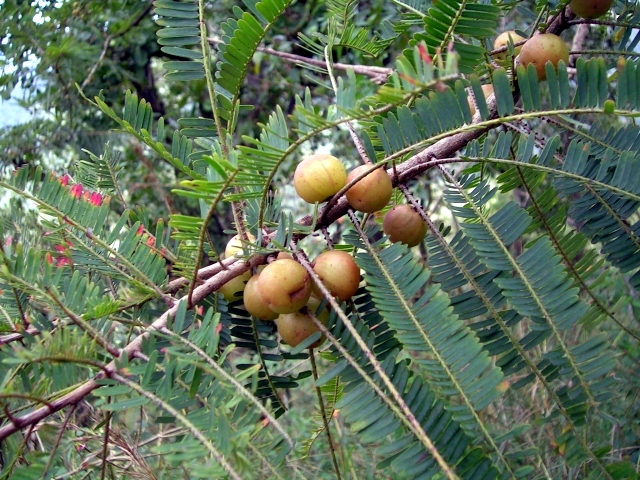Awala (Amla)

Quick Facts
- Scientific Name: Phyllanthus emblica
- Average Lifespan: 50–70 years
- Native To: Indian subcontinent
- Commonly Found In: Uttar Pradesh, Madhya Pradesh, Rajasthan, Tamil Nadu, and Maharashtra
- Growth Habit: Medium-sized deciduous tree
- Uses: Ayurveda, dietary supplement, skincare, hair care
Overview
Amla, also known as Indian Gooseberry, is one of the most important medicinal plants in India. It is revered in Ayurveda for its exceptional health benefits and is widely consumed in various forms, including raw fruit, juice, powder, and oil. Known for its rich vitamin C content, Amla is considered a superfood that promotes longevity, boosts immunity, and enhances overall well-being.
Botanical Characteristics
Amla is a medium-sized tree with feathery, small leaves and greenish-yellow flowers. The fruit is round, light green, and slightly translucent, with a distinct sour and astringent taste. It is harvested between November and February and is known for its ability to retain nutritional value even after processing.
Uses in Ayurveda and Traditional Medicine
Amla is classified as a "Rasayana" in Ayurveda, meaning it promotes rejuvenation and longevity. It has been traditionally used for:
- Boosting Immunity: Amla is one of the richest sources of vitamin C, enhancing the body's defense mechanisms.
- Digestive Health: It aids digestion, improves gut health, and helps in relieving acidity and constipation.
- Diabetes Management: Amla helps regulate blood sugar levels and improves insulin sensitivity.
- Hair and Skin Care: Amla oil and powder are widely used for strengthening hair, preventing premature graying, and improving skin complexion.
- Heart Health: It supports cardiovascular health by reducing cholesterol levels and improving blood circulation.
- Liver Detoxification: Amla helps in detoxifying the liver and improving its function.
Scientific and Modern Applications
Amla is extensively studied for its antioxidant properties, anti-inflammatory effects, and its role in reducing oxidative stress. It is used in modern dietary supplements, herbal medicines, and cosmetic products. Amla extracts are also utilized in pharmaceutical formulations for their therapeutic benefits.
Cultivation and Conservation
Amla trees are well-adapted to Indian climatic conditions and require minimal maintenance. They thrive in both dry and moist regions and can be cultivated in home gardens and commercial orchards. Due to its increasing demand, efforts are being made to promote large-scale cultivation.